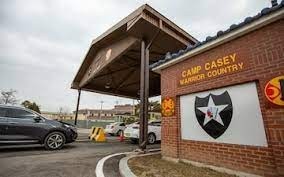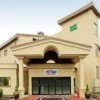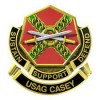Up until today, Korea is still undergoing a very tumultuous division that has severely affected its relationship with various countries, specifically the United States of America. Ever since the Korean War in 1950 (which was the first significant armed conflict of the Cold War), military bases in Korea (particularly the United States ally South Korea) have seen its forces integrated with U.S. military, and the most successful integration is Camp Casey South Korea, which is currently being commanded by the United States Military 2nd Infantry Division. The U.S. 2nd Infantry Division (2ID) also known as the Warrior Division, posses a unique military and combat strategy that is unique from the other United States Military armed forces as well as any other Korean forces that was established to specifically support the South Korean allies from the North Korean aggression.
Currently, the United States Army Garrison – Red Cloud (USAG – Red Cloud) is the acting commanding force that is responsible for all aspects of base operations the Casey Garrison. Located at Tongduchon, which is approximately 40 miles north of Seoul in Korea, the camp sits in an approximate 3,500-acre land within a valley. The military post is currently home to a population of approximately 8,800 individuals, 6,300 of which are military personnel. As of 2001, 42 military bases in South Korea North of Seoul qualified for the Hardship Duty pay, and Camp Casey was one of the posts to be authorized of such pays for its military troops.
Historical highlights
From its original inception during the start of the Korean War in the early 1950’s, Camp Casey was later renamed during the year 1952 in honor of Major Hugh Boyd Casey who died of a plane crash after his arrival in 1951. Following a display of complete heroism and selflessness that resulted in his plane crash, the camp was later dedicated to him and the crash site is marked by a white concrete cross (which replaced a white wooden cross) as a reminder of the brave man.
Several battalions and divisions used Camp Casey as a home during the Korean War. Some notable battalions include the United States 45th Division; the United States 5th and 7th Marines; the 19th Battalion Combat Team from the Philippines; and the Royal Thai Battalion. It was also the home of the 1st Royal Australian Regiment up until 1953 (later to be relieved by the 2nd Royal Australian Regiment on the said year). Camp Casey was also the site for the training and rehabilitation of the 35th Infantry Division (35 ID), where they remained in the camp and later returned to Hawaii as part of the 25th Infantry Division (25 ID) where they were to remain as reservists during the remained of 1953. The United States 7th Infantry Division also used the camp as the main garrison to defend the DMX during the years 1953 to 1971. In 1994, saw the transfer of Camp Casey’s division headquarters to Camp Red Cloud.






